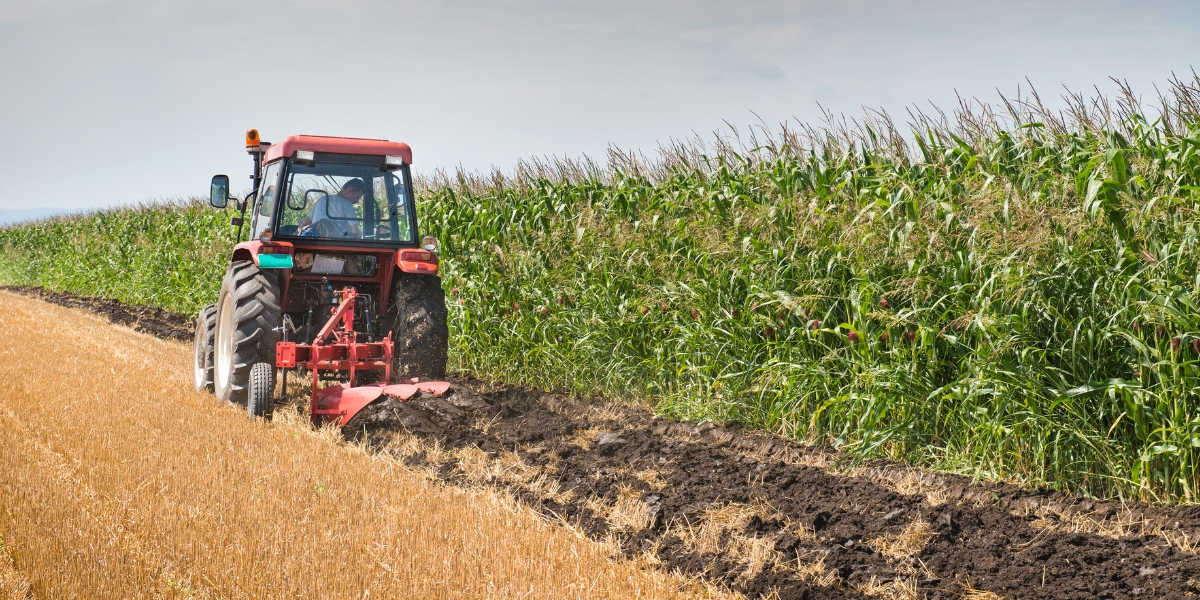Damage caused by plowing to soil, biodiversity and pollinating insects
Plowing is an agricultural practice as widespread as it is harmful. In this article, we want to explain to you what are the negative effects that this technique causes on the health of the soil and on the delicate natural balances, and the possible solutions to limit its environmental impact.
What is plowing and why is it practiced?
Plowing is a method of working the land which consists in turning and breaking up the soil with a plough, a hoe, or even a simple spade. This cultivation methodology has been adopted by Westerners for centuries, and has played a crucial role in the development of modern agriculture.
Plowing is used in agriculture for several purposes, including:
- prepare the soil for planting, creating a bed for plant germination;
- remove weeds and residues of previous crops;
- incorporate fertilizers or other organic matter into the soil to increase its fertility.
But is it really such an effective cultivation method?
Because plowing is bad for the earth
As stated by Masanobu Fukuoka – Japanese farmer, writer and philosopher known for having developed the method of natural agriculture: “Every time humanity interferes with Nature (like when plowing) things start to go wrong*“.
In fact, despite the widespread belief that the effects of plowing on the harvest are beneficial, this practice has negative consequences on the quality of the soil, on the crops and – obviously – also on the resulting products.
In fact, plowing removes the upper layer of the soil, thus leaving it exposed to the elements. This can lead to progressive soil erosion and the loss of nutrients that are naturally present there, with a consequent decrease in fertility.
In addition to erosion, plowing can also cause soil compaction, reducing its porosity. Compact soil limits the correct penetration of plant roots into the soil and therefore becomes unsuitable for their luxuriant growth, causing a decrease in crop productivity.
Furthermore, it is not surprising that plants born in poor, eroded and compact soil are weak and therefore also more vulnerable to disease, to the attack of harmful microorganisms or insects, as well as to unfavorable environmental conditions.
To overcome these consequences, farmers usually remedy by using expensive and harmful chemical fertilizers, pesticides and herbicides which further impoverish the soil, contributing to pollution and the disappearance of biodiversity and pollinators.
The damage of plowing to biodiversity and pollinating insects
If the consequences on the soil were not enough, plowing also destroys the natural habitat of many plants and animals, reducing the variety of species that inhabit a given environment, called biodiversity.
In fact, herbaceous plants and wild flowers in Nature provide food and shelter to many animals and their disappearance, or at least drastic reduction, has already contributed to a significant loss of the population of many of these precious creatures who are no longer able to feed themselves and reproduce. Among these, also the precious pollinating insects – such as bees, osmia (solitary bees), butterflies and beetles – essential for the production of many crops.
Additionally, in what is definitely a vicious circle, plowing encourages the abuse of chemicals by causing poisoning and death of pollinators exposed to these chemicals through direct or even indirect contact, such as water contamination.
The solution? More sustainable agricultural practices and Oasis for biodiversity
As we have seen, plowing has various impacting effects on natural balances. However, with the adoption of more sustainable agricultural practices it is possible to limit the damage and preserve the ecosystem. How?
For example, implementing conservation agriculture that uses direct seeding or overseeding, crop rotation, and soil cover (mulching) with plant residues or other crops. These farming methods help conserve soil structure, reduce soil erosion and protect biodiversity.
The use of biological and integrated pest control to reduce dependence on chemicals is also a good practice, and as far as plowing is concerned, it is possible to reduce its frequency and intensity.
Last, but not least, is the urgency of creating ecological corridors and refuge areas to maintain or plant bands of spontaneous vegetation, flowering meadows and hedges. We call these habitats OASIS for biodiversity. In fact, for several years, with the SavingBees project, we have been committed to offering food and shelter to pollinators and other useful organisms, facilitating their survival and their important contribution to biodiversity and agriculture.
Vast natural spaces where we restore the ideal environments for these marvelous animals, thanks to the sowing of a great variety of flowers that produce abundant nectar and pollen. In these vast wild meadows, where the land is no longer ploughed, pollinators have access to abundant food and can live and thrive in complete safety.
(*taken from “The Straw Thread Revolution” by Masanobu Fukuoka, Libreria Editrice Fiorentina)

